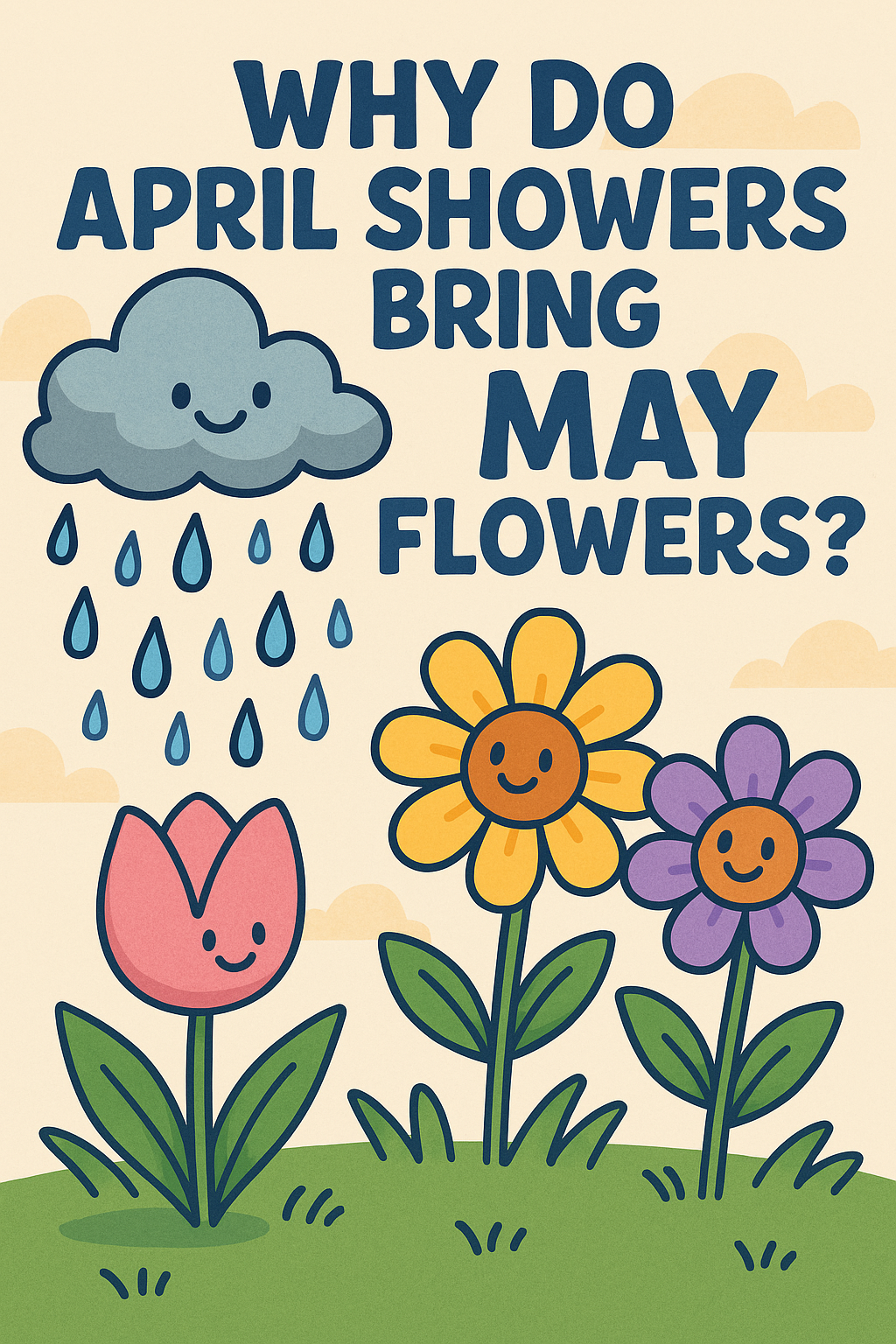Why Do April Showers Bring May Flowers?

Natural Sciences | The Varrock Street Journal
Good morning, readers! Maybe some of you are like me today. Sitting inside enjoying a nice hot cup of coffee, enjoying the soft rainfall outside my door. While soaking these moments in, I thought to myself, we’ve all heard the phrase “April showers bring May flowers”—is there real science behind this poetic proverb, or is it just a charming rhyme passed down through generations?
Today, we’re breaking down the weather patterns, soil science, and plant biology that explain why April’s soggy skies lay the groundwork for one of nature’s most beautiful seasonal transitions. If it is raining outside for you, grab your coffee, snuggle under a warm blanket, and enjoy today's read!

🌧️ The Science Behind April Showers
In many parts of the Northern Hemisphere, April marks a seasonal transition from winter to spring. During this time, warmer air from the south collides with cooler air lingering from winter, creating instability in the atmosphere—a recipe for frequent rain showers and storms.
In the U.S., April is often the wettest spring month, especially in the Midwest and Northeast, due to the jet stream’s position and increasing solar heating. This moisture is critical for rehydrating the soil after months of cold and dormancy.
🌱 Why Flowers Love It
Rain is only one part of the equation. Here's why April's wet weather supports May’s bloom:
- Soil Moisture: Spring rain loosens compacted winter soil, making it easier for seeds to germinate and roots to grow.
- Warming Temperatures: By May, longer days and increased sunlight activate photosynthesis, fueling plant growth.
- Vernalization: Many flowers need a period of cold followed by warmth to bloom—a process called vernalization. April helps set that temperature change in motion.
So while April doesn't directly cause the blooms, it creates the perfect conditions for dormant seeds and bulbs to wake up and thrive.

🕰️ A Bit of History
The phrase “April showers bring May flowers” dates back to at least the 16th century in England, where the climate fits the pattern well. A 1557 English poem reads:
“Sweet April showers / Do spring May flowers.”
It was an early way to describe the cyclical connection between rainfall and rebirth, and it stuck because it’s often—though not universally—accurate.
🌍 Regional Differences
Not every place sees this pattern:
- Mediterranean climates (like California) get most rain in winter, with drier Aprils and blooming starting earlier.
- Tropical regions may have little distinction between spring and other seasons.
- Deserts rely on rare rain events that can cause explosive blooming whenever they occur, regardless of month.
So, while the rhyme is catchy, its accuracy depends heavily on where you live!
🤔 Why This Matters
Understanding seasonal weather patterns isn’t just poetic—it’s practical. It helps:
- Gardeners plan when to plant.
- Farmers prepare for sowing crops.
- Ecologists track how climate change may be shifting traditional growing seasons.
As weather becomes less predictable, knowing how rain and temperature influence plant cycles will be essential for agriculture, biodiversity, and even food security. Take a look at one of our earlier articles discussing the ever-later winters we have been experiencing the last couple of years.
🌟 Spotlight on the Future
Climate scientists are watching how rising temperatures and shifting rainfall patterns may affect spring flowering times. Some key developments:
- Phenology studies (the science of plant timing) show flowers are blooming earlier than usual in many areas.
- AI models and satellite data are being used to predict optimal planting and blooming windows.
- Drought-resistant crops are being developed to adapt to inconsistent spring moisture.
😲 Did You Know?
- Tulips planted in the fall need both cold and rain to bloom in spring—making them one of the truest “April showers bring May flowers” examples.
- Some flowers can sense day length and temperature—a phenomenon called photoperiodism.
- A single April thunderstorm can deposit more nitrogen into soil than a bag of fertilizer!
A cute informational video discussing the article!
🧠 Reflection Questions
- Have you noticed changes in when flowers bloom where you live?
- How might climate change alter the seasonal cues that plants rely on?
- Can ancient proverbs still guide modern gardening and farming?
📚 References (APA Format)
National Weather Service. (2023). Spring weather patterns and precipitation. https://www.weather.gov
Royal Horticultural Society. (2024). The science of spring flowers. https://www.rhs.org.uk
NASA Earth Observatory. (2022). Tracking seasonal blooms from space. https://earthobservatory.nasa.gov
United States Department of Agriculture. (2023). Vernalization and plant development. https://www.usda.gov
👋 Final Thoughts
The rhyme may be old, but the science is real: April’s rain feeds May’s beauty. So next time you’re caught in a drizzle, remember—you might just be walking through tomorrow’s flowerbed.
